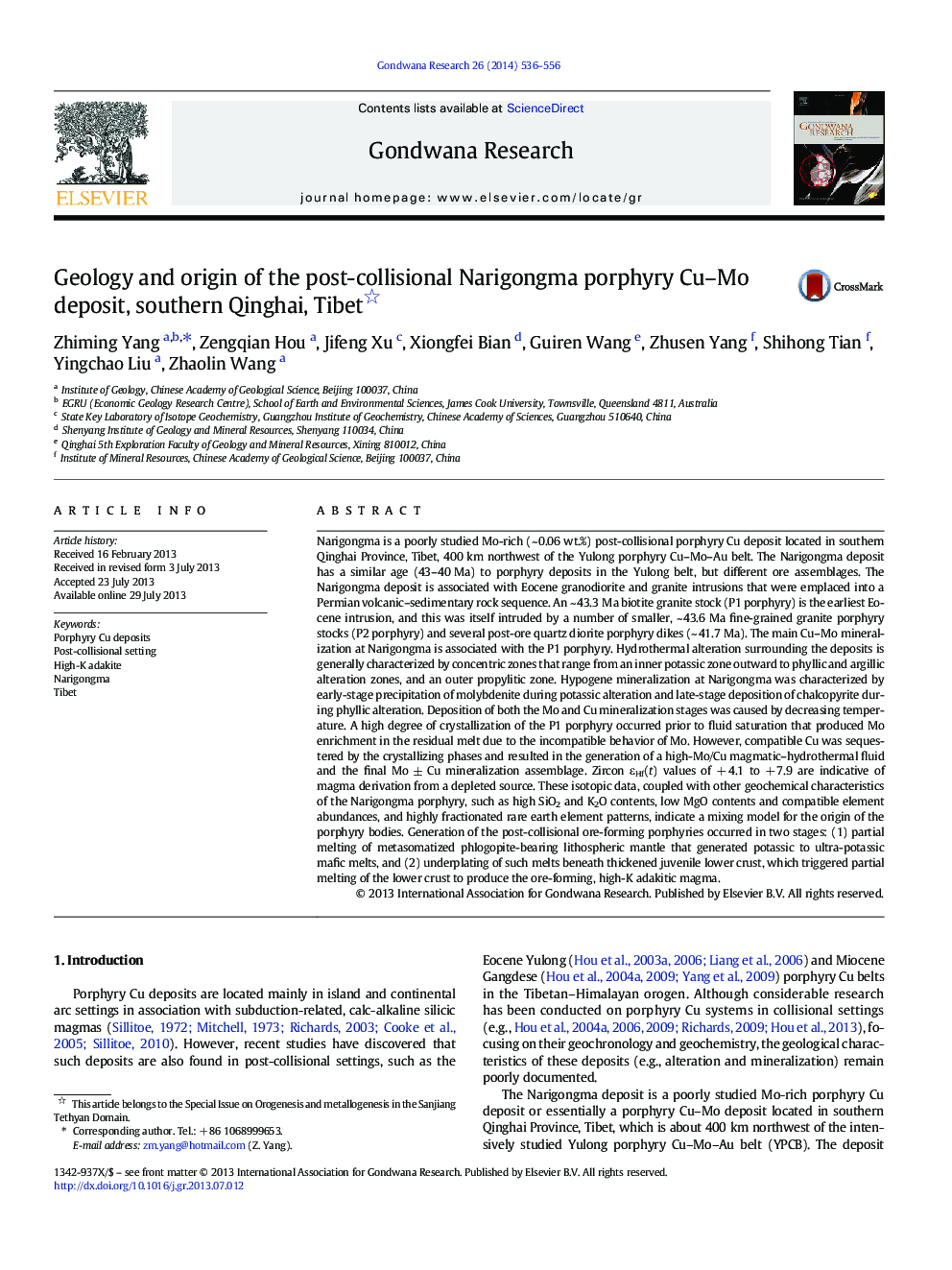| کد مقاله | کد نشریه | سال انتشار | مقاله انگلیسی | نسخه تمام متن |
|---|---|---|---|---|
| 4727287 | 1356368 | 2014 | 21 صفحه PDF | دانلود رایگان |

• We present a detailed geological investigation on porphyry Cu–Mo at Narigongma.
• Mineralization characterized by Mo precipitation during potassic alteration
• Emplacement depths of the causative intrusions control the ore assemblage.
• Underplating of ultra-potassic mafic melts key to produce ore-forming magma
Narigongma is a poorly studied Mo-rich (~ 0.06 wt.%) post-collisional porphyry Cu deposit located in southern Qinghai Province, Tibet, 400 km northwest of the Yulong porphyry Cu–Mo–Au belt. The Narigongma deposit has a similar age (43–40 Ma) to porphyry deposits in the Yulong belt, but different ore assemblages. The Narigongma deposit is associated with Eocene granodiorite and granite intrusions that were emplaced into a Permian volcanic–sedimentary rock sequence. An ~ 43.3 Ma biotite granite stock (P1 porphyry) is the earliest Eocene intrusion, and this was itself intruded by a number of smaller, ~ 43.6 Ma fine-grained granite porphyry stocks (P2 porphyry) and several post-ore quartz diorite porphyry dikes (~ 41.7 Ma). The main Cu–Mo mineralization at Narigongma is associated with the P1 porphyry. Hydrothermal alteration surrounding the deposits is generally characterized by concentric zones that range from an inner potassic zone outward to phyllic and argillic alteration zones, and an outer propylitic zone. Hypogene mineralization at Narigongma was characterized by early-stage precipitation of molybdenite during potassic alteration and late-stage deposition of chalcopyrite during phyllic alteration. Deposition of both the Mo and Cu mineralization stages was caused by decreasing temperature. A high degree of crystallization of the P1 porphyry occurred prior to fluid saturation that produced Mo enrichment in the residual melt due to the incompatible behavior of Mo. However, compatible Cu was sequestered by the crystallizing phases and resulted in the generation of a high-Mo/Cu magmatic–hydrothermal fluid and the final Mo ± Cu mineralization assemblage. Zircon εHf(t) values of + 4.1 to + 7.9 are indicative of magma derivation from a depleted source. These isotopic data, coupled with other geochemical characteristics of the Narigongma porphyry, such as high SiO2 and K2O contents, low MgO contents and compatible element abundances, and highly fractionated rare earth element patterns, indicate a mixing model for the origin of the porphyry bodies. Generation of the post-collisional ore-forming porphyries occurred in two stages: (1) partial melting of metasomatized phlogopite-bearing lithospheric mantle that generated potassic to ultra-potassic mafic melts, and (2) underplating of such melts beneath thickened juvenile lower crust, which triggered partial melting of the lower crust to produce the ore-forming, high-K adakitic magma.
Figure optionsDownload as PowerPoint slide
Journal: Gondwana Research - Volume 26, Issue 2, September 2014, Pages 536–556